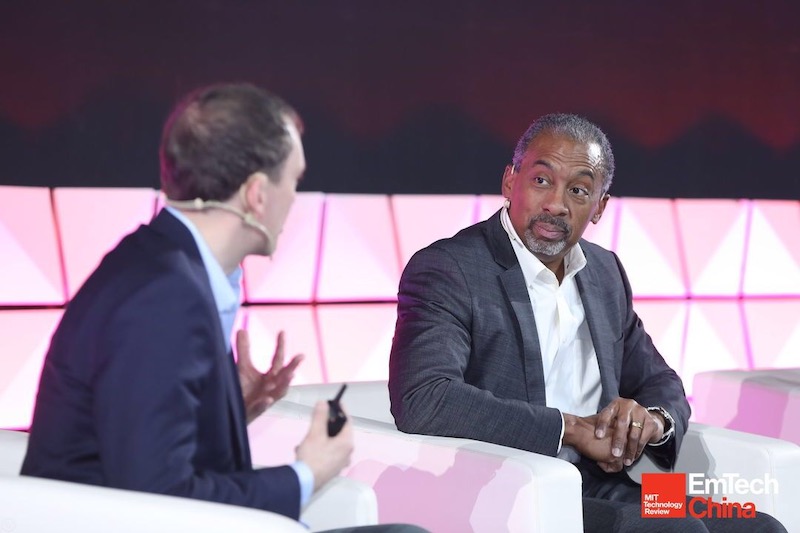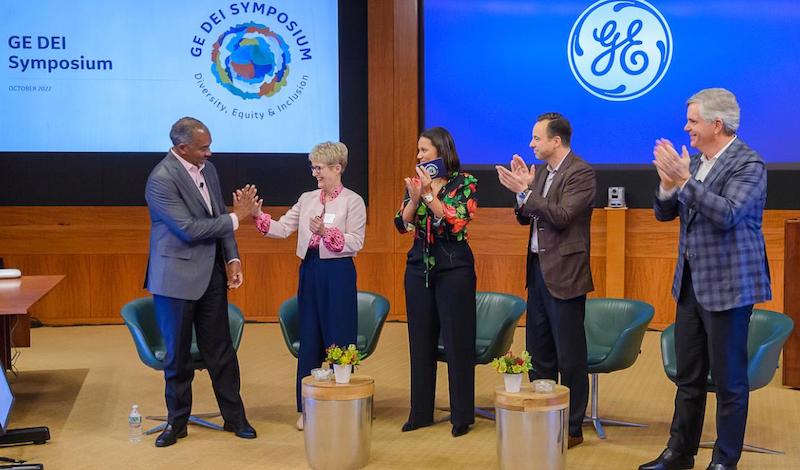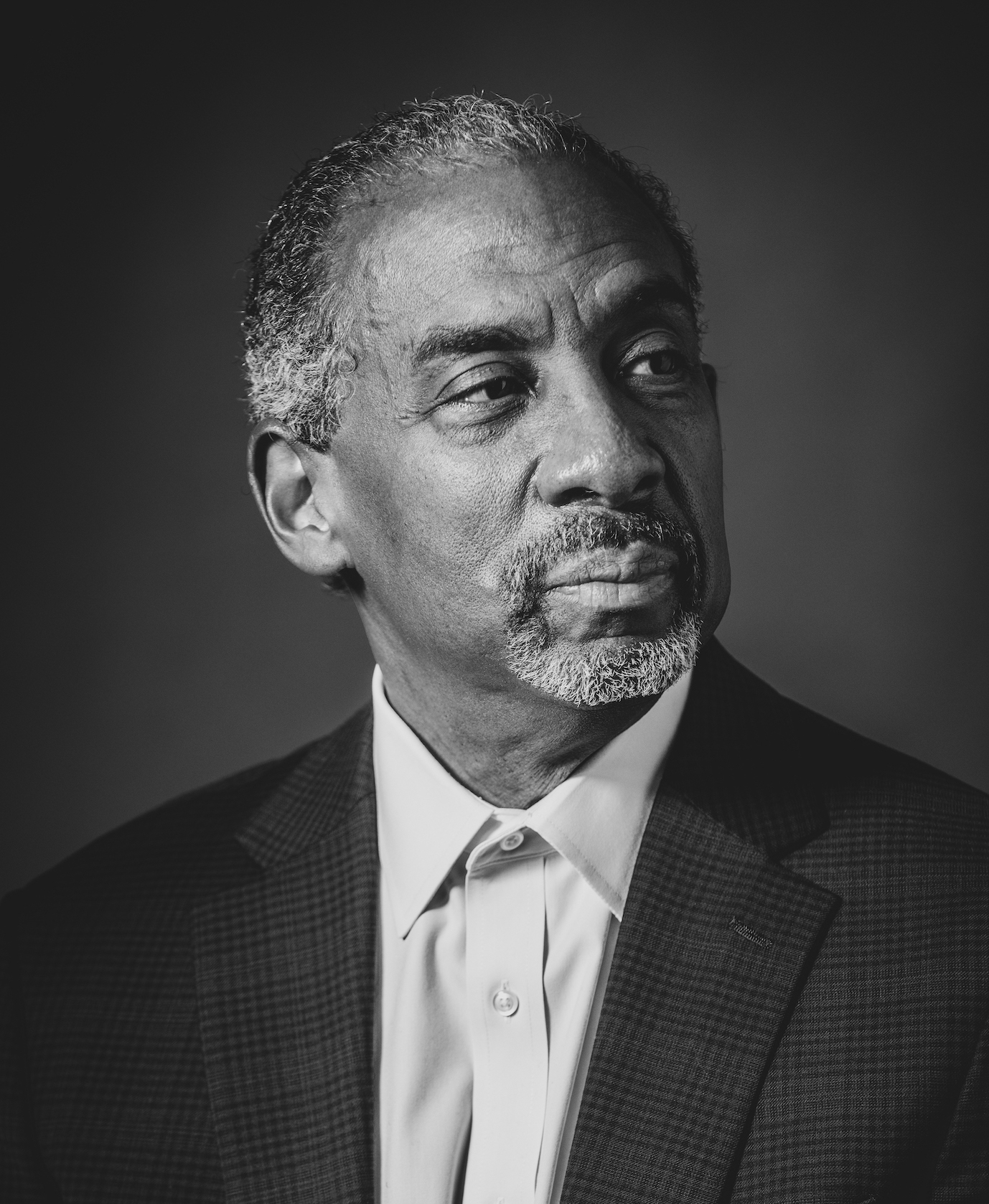As an electrical engineering major at Howard University in the 1980s, Colin Parris received a tricky assignment: Build a small burglar alarm that would turn on a light when a switch was opened. He painstakingly assembled a board with 300 wires, reattaching them every time they got jiggled out of place in his locker. He estimates the project took 40 to 50 hours.
Then Parris was asked to use an 8-bit microprocessor to complete the same assignment. With 10 wires connected to LED lights and a small amount of programming, he built his second burglar alarm in about three hours.
After that experience, Parris was convinced of the power of computers to simplify difficult tasks and supplement human insight. He went on to build his career around his dual passions of electrical engineering and computer science, leading inventive projects that address complex problems. At GE, he founded the Digital Twin Initiative, which uses computer modeling to accurately predict the performance of sophisticated machinery, such as a jet engine.
For his creativity, mentorship, and contributions to his field, Parris received the Black Engineer of the Year Award, presented by Career Communications Group (CCG) and US Black Engineer & Information Technology magazine, at the annual BEYA STEM conference, which took place this past weekend in Washington, D.C. In 2022, Parris also was inducted into the National Academy of Engineers and received the Business Intelligence Group (BIG) Innovation Award.
Parris sees himself as part of a long tradition of engineers who have developed some of society’s crucial technologies, from the electrical power grid to aviation to modern healthcare. “When I look at my career, I don’t see me,” says Parris, senior vice president and chief technology officer at GE Digital. “I see a reflection of some brilliant teams I’ve been blessed to work with and some really hard problems.”

Within his own family, he has carried on the legacy of his father, an electrical engineer and professor at the University of the West Indies in Trinidad, where Parris grew up. He was inspired by the island’s natural environment, examining the honeycombs built by bees and watching how birds wove their nests. He admired Leonardo da Vinci’s mastery of art and science, and lost himself in the Tom Swift books, cheering on the protagonist each time his invention solved a problem or improved the world.
Parris continued his education after Howard, earning master’s and doctorate degrees in electrical engineering and computer science from the University of California, Berkeley, and a master’s in management from Stanford. He began his career at AT&T Bell Laboratories, where he worked on the digital transformation of telecommunications networks, and then moved to IBM, where he spent 20 years.
At IBM, Parris led the commercialization of the Blue Gene program, contributing to the development of a supercomputer that can unravel the mysteries of the human genome. One challenge his team faced was that the calculations processed by such a high-performance computer generate tremendous amounts of heat. Seeking a solution, IBM engineers began talking to scientists around the world. A biologist noted that in the African desert, termites build towering, leaning chimneys that cool their nest to an appropriate temperature range for their queen to lay eggs. Using that insight from the natural world and innovative cooling advances from IBM’s leading computing systems research led to a computer with angled channels that help dissipate heat.
Parris joined GE’s software and analytics research division in 2014, attracted by the opportunity to apply his skills to fundamental industries such as energy and transportation. His Digital Twin Initiative combines principles of physics with the artificial intelligence capabilities of a neural network, emulating the structure of a human brain. It creates what Parris calls a “living, learning model” that constantly updates its recommendations for how a specific piece of complex machinery should be used and maintained. The analysis of a jet engine provided by a digital twin, for example, can show how a pilot should fly to optimize fuel or provide an early warning that an engine component will need to be replaced.

Digital twins can provide far more comprehensive calculations than a human, but Parris says that at first GE employees in the field were sometimes reluctant to use them. “A chief engineer would say, ‘I don’t know when this model won’t work, and I can’t take the risk,’” Parris recalls. To earn their trust, Parris had the model redesigned to show its own data — indicating, for example, when a digital twin for a wind turbine had detailed information about performance at particular wind speeds, and when the data were sparser. Then the model would display its own degree of confidence about its recommendations. The change in business processes led to widespread adoption of the new systems.
“We had to create humble AI, and it took me a while to learn that,” Parris says. “The data doesn’t tell you everything. Even when you have the model, you have to account for the human process to make it work.”
As the United States marks Black History Month in February, Parris hopes the example of his career will inspire others, aiding his efforts to improve the diversity of his profession. “My father was my first mentor, and so it was never Black History Month for me — it was Black History Year, because I saw it every day,” he says. He visits high schools to talk to students about STEM opportunities and sponsors young engineers to help them develop their careers.

“We will need every bit of these people in the future to address the problems in climate, health, and inequity on this planet,” Parris says. “We cannot judge people on the color of their skin, on their gender, and all this nonsense. I would hate to say that we’re listening only to a certain group of people when somebody else has an idea that could save our society.”
Today, Parris continues to explore the world with the sense of wonder that infused his childhood in Trinidad. He loves to travel with his wife and son, and he enjoys reading about history, particularly early examples of technology from societies that were creating their own innovative responses to the issues of their time.
In early 2024, GE Digital is scheduled to become the leading software division of GE Vernova, GE’s portfolio of energy businesses, which is planned to become an independent company. Looking ahead to this planned transition, Parris says, “We have a lot to offer as we go through this next phase. We’re planning to break into separate businesses, but we’ll all have the GE name, and we’ll become even more effective in doing what needs to be done.”
“Engineering is a noble service,” Parris says. “When the lights go on, nobody claps. Nobody cares about it until things go wrong. But that service is how you build a civilization.”
